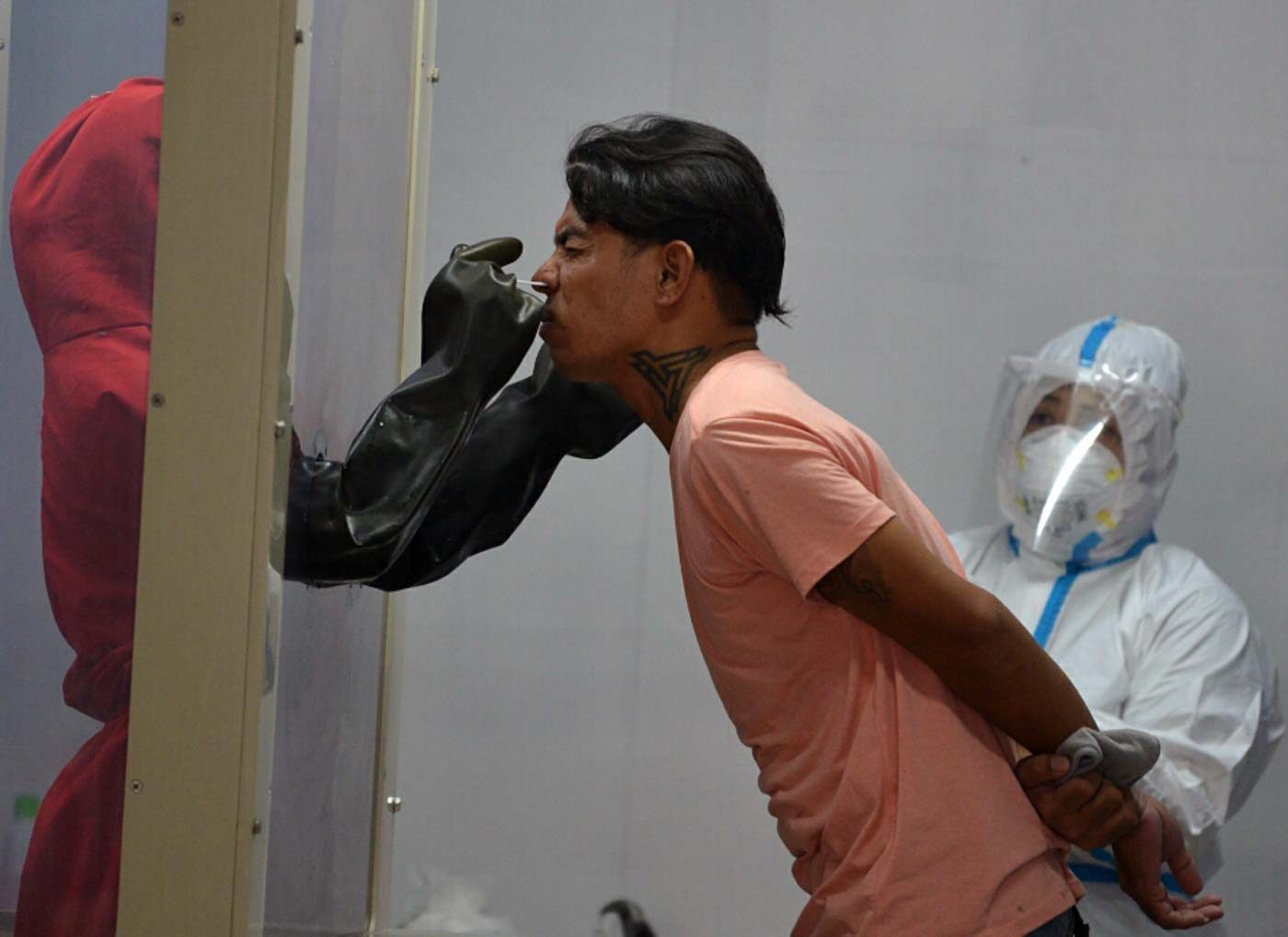SUMMARY
This is AI generated summarization, which may have errors. For context, always refer to the full article.

MANILA, Philippines – Senator Francis Pangilinan on Wednesday, May 20, questioned the government’s claim that the Philippines had flattened the curve of the coronavirus outbreak, pointing out the backlog in processing tests.
Health Secretary Francisco Duque III explained during the Senate inquiry that the basis of his statement that the curve had flattened was the latest reports showing the number of positive cases had stabilized at an average of 250 a day, from a peak of 500 in March. The doubling time of coronavirus deaths have become longer too.
Pangilinan countered that a conclusion like that could be made only on the basis of 0.17% or 0.2% of the population getting tested – “at the very least an intelligent, speculative guess.”
“But what if we test more people, then we get more cases?” the senator said in Filipino.
Pangilinan asked whether the Philippines could claim the cases had plateaud even if the country had a high fatality rate and the lowest recovery rate in the region.
Duque answered in the affirmative: “Yes, meron po tayong (we have the) parameters to say that.”
After a series of questions on the government’s strategy and equipment bought, Pangilinan then pointed out that the backlog in the testing program was still high at 6,500, according to testing czar Vince Dizon.
As of Wednesday, there were 13,221 confimed cases in the country. The number didn’t include yet the possible positive results among the 6.500 samples still being processed.
“In other words, we cannot say that new cases are going down until we see the results of this pending backlog that hopefully we can address,” Pangilinan said.
Still, Duque said that the results of the backlog will not affect the total number of confirmed cases.
“Sa dumaang mga test natin, mga 8% to 9% lang ang positive. So parang mga 650 lang ang katumbas n’yan. And it will not materially influence or affect the flattening of the curve. Kakaunti lang po ‘yan eh,” Duque said.
(In the past tests, only 8% to 9% were positive. So that’s equivalent to about 650 cases [among 6,500]. It will not materially influence or affect the flattening of the curve. That’s only few.)
Government target
“I’m sorry. First, you’re not testing enough. Not yet. That in itself will affect the overall results. Second, you have a backlog of 7,000 cases,” Pangilinan said.
The senator added: “Let’s say it’s marginal, but patong patong na kasi (this is one problem on top of the other) for us to be able to come up with a concrete or science-based conclusion.”
Dizon said the government was targetting to eliminate the backlog within the next week and a half.
Backing up Duque, the testing czar said other experts – such as the University of the Philippines COVID-19 Pandemic Response Team and epidemiologist Dr John Wong – had seen the same trend.
“Is that a reason for us to pat ourselves in the back? Absolutely not. Because the idea is precisely for our testing capacity to catch up – that is to avoid future waves of the virus where the daily cases may again rise,” Dizon said in a mix of English and Filipino.
“If we don’t do what we need to do under the plan, [we might] double from 200 and [be] up again to 500. We are catching up and we are trying fast track this, but I think all the experts have already said that the curve has flattened,” Dizon reiterated.
While government officials and doctors claimed that the cases are flattening, Ateneo de Manila University mathematics associate professor Felix Muga II said that the number of cases continue to move upward.
The Philippines targets to reach a testing capacity of 30,000 per day by end of May, and then 50,000 per day in two months, to be able to test 2% of the over 100 million population. Current testing capacity, however, is still at around 17,000 per day as of May 18.
The Philippines has so far tested over 240,000 individuals. – Rappler.com
Add a comment
How does this make you feel?
There are no comments yet. Add your comment to start the conversation.